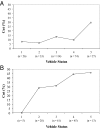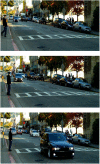Higher social class predicts increased unethical behavior
- PMID: 22371585
- PMCID: PMC3306667
- DOI: 10.1073/pnas.1118373109
Higher social class predicts increased unethical behavior
Erratum in
-
Correction for Piff et al., Higher social class predicts increased unethical behavior.Proc Natl Acad Sci U S A. 2017 Oct 24;114(43):E9181. doi: 10.1073/pnas.1716910114. Epub 2017 Oct 16. Proc Natl Acad Sci U S A. 2017. PMID: 29073115 Free PMC article. No abstract available.
Abstract
Seven studies using experimental and naturalistic methods reveal that upper-class individuals behave more unethically than lower-class individuals. In studies 1 and 2, upper-class individuals were more likely to break the law while driving, relative to lower-class individuals. In follow-up laboratory studies, upper-class individuals were more likely to exhibit unethical decision-making tendencies (study 3), take valued goods from others (study 4), lie in a negotiation (study 5), cheat to increase their chances of winning a prize (study 6), and endorse unethical behavior at work (study 7) than were lower-class individuals. Mediator and moderator data demonstrated that upper-class individuals' unethical tendencies are accounted for, in part, by their more favorable attitudes toward greed.
Conflict of interest statement
The authors declare no conflict of interest.
Figures




Comment in
-
Evidence that publication bias contaminated studies relating social class and unethical behavior.Proc Natl Acad Sci U S A. 2012 Jun 19;109(25):E1587; author reply E1588. doi: 10.1073/pnas.1203591109. Epub 2012 May 21. Proc Natl Acad Sci U S A. 2012. PMID: 22615347 Free PMC article. No abstract available.
References
-
- Gino F, Pierce L. The abundance effect: Unethical behavior in the presence of wealth. Organ Behav Hum Dec. 2009;109:142–155.
-
- Adler NE, Epel ES, Castellazzo G, Ickovics JR. Relationship of subjective and objective social status with psychological and physiological functioning: Preliminary data in healthy white women. Health Psychol. 2000;19:586–592. - PubMed
-
- Kraus MW, Piff PK, Keltner D. Social class as culture: The convergence of resources and rank in the social realm. Curr Dir Psychol Sci. 2011;20:246–250.
-
- Kraus MW, Piff PK, Keltner D. Social class, sense of control, and social explanation. J Pers Soc Psychol. 2009;97:992–1004. - PubMed
-
- Kraus MW, Côté S, Keltner D. Social class, contextualism, and empathic accuracy. Psychol Sci. 2010;21:1716–1723. - PubMed
Publication types
MeSH terms
LinkOut - more resources
Full Text Sources

